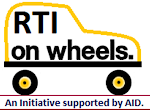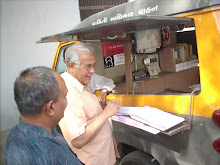New Indian Express: Ahmedabad: Tuesday, 14th
October 2025.
In Gujarat alone, 18 RTI users have lost their lives for daring to question authority.
Twenty years after the Right to Information (RTI) Act came into force, Gujarat’s transparency record has become a reflection of its governance shortcomings. More than 21 lakh RTI applications have been filed by citizens determined to break through bureaucratic secrecy. Yet, the government's poor proactive disclosures, dismal penalty record, and failure to protect whistleblowers have turned what was once a reform milestone into an accountability crisis.
When the RTI Act was implemented on October 12, 2005, it was projected as a powerful tool to dismantle administrative opacity. In Gujarat, the deluge of 21.29 lakh RTI applications over two decades reveals both the enthusiasm of citizens and the persistent resistance of officials. The Education, Home, and Revenue departments alone accounted for 58% of these applications, exposing the concentration of public power in a few critical sectors.
Officials admit that stronger digital disclosures could have eased the pressure, but the state’s implementation machinery never shifted gears.
According to the NGO Right to Information Gujarat Initiative, while citizens lined up to ask questions, appeals and complaints continued to pile up at the Gujarat State Information Commission (GSIC). Since May 2005, the GSIC has processed over 1.37 lakh appeals and complaints. Of these, 1,26,540 have been disposed of, while 1,248 remain pending. But the most telling silence lies elsewhere: in 20 years, not a single journalist or civil society member has been appointed as an Information Commissioner leaving the entire process confined within a bureaucratic loop, deciding citizens’ right to know without citizen representation.
The penalty mechanism intended to enforce compliance has been reduced to a toothless tiger. Over the past two decades, only 1,284 Public Information Officers (PIOs) were fined, amounting to a total of Rs 1.14 crore less than 1% of all decided cases. Just 74 PIOs faced disciplinary action. This reflects a culture where opacity thrives and violations rarely face consequences. Since 2006, the GSIC has issued 17 recommendations, from training PIOs to modernizing records. Yet the state government remains stuck in a cycle of repetition without reform, the NGO's data reveals.
The state’s digital transparency also paints a grim picture. A 2025 audit of 26 departments under Section 4(1)(b) of the RTI Act found that only 35% had updated their data. Another 38% displayed outdated information, 19% lacked key manuals and budget records, and 8% had non-functional websites. While departments like Education and Health showed periodic updates, Urban Development and Legal departments continued to rely on decade-old files openly defying Supreme Court directives mandating regular audits.
As the government withdrew from its mandated public awareness campaigns under Section 26 of the RTI Act, citizens and journalists stepped into the void. Gujarat’s MAGP blog alone has published over 28,000 RTI-based stories sustaining the transparency debate where the state remained silent.
NGO coordinator Pankti Jog emphasized that experts have already laid out a detailed blueprint for action not more circulars. These recommendations include enforcing all GAD directives and court orders, appointing nodal RTI officers at every level, integrating taluka and district offices into the online RTI system, live-streaming second appeals for public scrutiny, redesigning appeal formats for better accessibility, and ensuring applicant anonymity to protect whistleblowers.
The data also underscores that the threat to RTI users is real. In Gujarat alone, 18 RTI users have lost their lives for daring to question authority. Nationally, 78 activists have been killed, even as the Whistleblower Protection Act of 2014 remains largely unimplemented. These deaths stand as a grim reminder of the cost of seeking transparency in a deeply opaque system.
Yet, the RTI Act survives not because of the state, but because of its people. Farmers, journalists, and activists 20 of them documented as RTI champions have exposed corruption across sectors such as education, health, agriculture, environment, and urban governance. Their courage shows that the real strength of RTI has always come from the ground up not from the corridors of power.
Two decades on, Gujarat’s RTI journey stands at a crossroads between empowerment and erosion. Citizens have kept the flame of accountability alive, but the state’s weak compliance, ineffective penalties, and disregard for whistleblower safety cast long shadows. Unless governance shifts decisively from paperwork to action, the promise of transparency may be buried beneath its own files.
In Gujarat alone, 18 RTI users have lost their lives for daring to question authority.
Twenty years after the Right to Information (RTI) Act came into force, Gujarat’s transparency record has become a reflection of its governance shortcomings. More than 21 lakh RTI applications have been filed by citizens determined to break through bureaucratic secrecy. Yet, the government's poor proactive disclosures, dismal penalty record, and failure to protect whistleblowers have turned what was once a reform milestone into an accountability crisis.
When the RTI Act was implemented on October 12, 2005, it was projected as a powerful tool to dismantle administrative opacity. In Gujarat, the deluge of 21.29 lakh RTI applications over two decades reveals both the enthusiasm of citizens and the persistent resistance of officials. The Education, Home, and Revenue departments alone accounted for 58% of these applications, exposing the concentration of public power in a few critical sectors.
Officials admit that stronger digital disclosures could have eased the pressure, but the state’s implementation machinery never shifted gears.
According to the NGO Right to Information Gujarat Initiative, while citizens lined up to ask questions, appeals and complaints continued to pile up at the Gujarat State Information Commission (GSIC). Since May 2005, the GSIC has processed over 1.37 lakh appeals and complaints. Of these, 1,26,540 have been disposed of, while 1,248 remain pending. But the most telling silence lies elsewhere: in 20 years, not a single journalist or civil society member has been appointed as an Information Commissioner leaving the entire process confined within a bureaucratic loop, deciding citizens’ right to know without citizen representation.
The penalty mechanism intended to enforce compliance has been reduced to a toothless tiger. Over the past two decades, only 1,284 Public Information Officers (PIOs) were fined, amounting to a total of Rs 1.14 crore less than 1% of all decided cases. Just 74 PIOs faced disciplinary action. This reflects a culture where opacity thrives and violations rarely face consequences. Since 2006, the GSIC has issued 17 recommendations, from training PIOs to modernizing records. Yet the state government remains stuck in a cycle of repetition without reform, the NGO's data reveals.
The state’s digital transparency also paints a grim picture. A 2025 audit of 26 departments under Section 4(1)(b) of the RTI Act found that only 35% had updated their data. Another 38% displayed outdated information, 19% lacked key manuals and budget records, and 8% had non-functional websites. While departments like Education and Health showed periodic updates, Urban Development and Legal departments continued to rely on decade-old files openly defying Supreme Court directives mandating regular audits.
As the government withdrew from its mandated public awareness campaigns under Section 26 of the RTI Act, citizens and journalists stepped into the void. Gujarat’s MAGP blog alone has published over 28,000 RTI-based stories sustaining the transparency debate where the state remained silent.
NGO coordinator Pankti Jog emphasized that experts have already laid out a detailed blueprint for action not more circulars. These recommendations include enforcing all GAD directives and court orders, appointing nodal RTI officers at every level, integrating taluka and district offices into the online RTI system, live-streaming second appeals for public scrutiny, redesigning appeal formats for better accessibility, and ensuring applicant anonymity to protect whistleblowers.
The data also underscores that the threat to RTI users is real. In Gujarat alone, 18 RTI users have lost their lives for daring to question authority. Nationally, 78 activists have been killed, even as the Whistleblower Protection Act of 2014 remains largely unimplemented. These deaths stand as a grim reminder of the cost of seeking transparency in a deeply opaque system.
Yet, the RTI Act survives not because of the state, but because of its people. Farmers, journalists, and activists 20 of them documented as RTI champions have exposed corruption across sectors such as education, health, agriculture, environment, and urban governance. Their courage shows that the real strength of RTI has always come from the ground up not from the corridors of power.
Two decades on, Gujarat’s RTI journey stands at a crossroads between empowerment and erosion. Citizens have kept the flame of accountability alive, but the state’s weak compliance, ineffective penalties, and disregard for whistleblower safety cast long shadows. Unless governance shifts decisively from paperwork to action, the promise of transparency may be buried beneath its own files.















































































